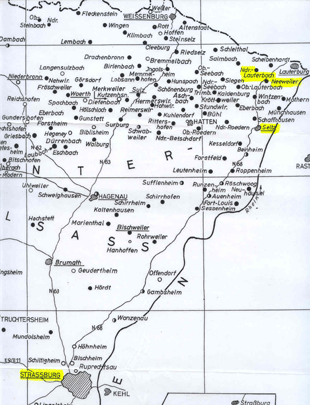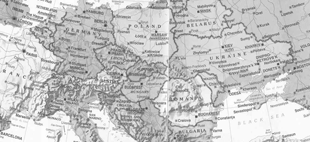|
THE GERMANS FROM RUSSIA
Vernetzung zum deutschen Text
WHO ARE THE GERMANS FROM RUSSIA?
The Germans from Russia are an identifiable ethnic group of people
whose movements as a group are traceable within historical context.
These movements began in the Rhineland territories of present day Germany
and France --the provinces referred to as Alsace,
Rhineland-Pfalz, Baden and Wuerttemberg. The political and religious
turmoil surrounding the Seven Years' War in Europe, the French
Revolution and the Napoleanic era resulted also in severely depressed
economic conditions for the German villages along the Rhine River during
the last half of the 1700's and the early 1800's. This coincided with
an era of an expansionist Russia acquiring territories from the Mongols
along the Volga River, and from the Turks in the Black Sea region. Beginning
with Catherine the Great in 1763 , and continuing with her grandson,
Alexander I in 1804, Russia instituted a colonization program to develop
and populate these new territories by attracting German farmers to these
areas with a program of economic, religious and political incentives.
More than a hundred thousand Germans made the 1700 mile trip to various
districts in South Russia, founding more
than 300 villages along the Volga River, along the Black Sea Coast,
and in Crimea. My direct ancestors were among those referred to as "Black
Sea Germans". The Weisses lived in Selz, along the Kutschurgan
Liman. The Schafers
lived in Crimea.
My Weiss and Schafer families lived in South
Russia for just over a hundred years, before emigrating to Canada. In
1913 Grandfather Conrad Weiss filed for a homestead near Fox
Valley, SK. In 1925
Grandfather Philip Schafer managed to get his family out of post-revolutionary
Russia, and began farming in the Golden Prairie, SK district. Philip's
mother, and eleven brothers and sisters had taken up homesteads nearby
in 1911.
But their relatives who stayed
behind in Russia were destined to endure even greater
turmoil and even more re-locations. Those who survived
the strife of the Russian Revolution, and the resulting
Civil War, the famine of the 1930's, and the purges of
1937 and 1938 were forcibly up-rooted en masse from their
villages during World War II. The Volga and Crimean Germans
were exiled to Siberia by Stalin at the beginning of the
war. The Black Sea Germans were ordered by Hitler in 1944
to abandon their homes and make the three and one-half
month trek north and west to holding camps in Poland.
As the Wehrmacht collapsed in 1945, millions of displaced
Europeans fled before the advancing Red Army, trying to
make their way into Western Germany. At the war's end,
Stalin reclaimed all former Russian citizens according
to the terms of the Yalta Agreement.
Russia repatriated 350,000 ethnic Germans who had been
living between the Dnieper and Dniester Rivers in present
day Ukraine, and exiled them
to prison labor camps in Siberia. They were shipped like
cattle in rail-cars out of Germany beginning in May 1945.
The Germans spent ten years (1946-1956), along
with hundreds of thousands of other Russian citizens, in forced labor
camps, in isolation from the rest of the world. Krushchev's Amnesty
finally allowed for limited mobility within Russia, but prevented them
from returning to their original pre-war villages. After enduring the
winters of Siberia, many of these Russian-Germans chose the warmer climate
of Kazahkstan,
encouraged also by the USSR's efforts
to establish agriculture on the semi-arid Asian plains.
The years since the break-up of the Soviet Union
in 1991 have seen a flood of applications as German people from the
former USSR applied to immigrate into the Democratic Republic of Germany.
A few have even returned to their original pre-war villages in Ukraine.

This map shows that part of Alsace from which Michael Fetsch departed
for South Russia in 1808. Michael's family was from Niederlauterbach,
but he married in Neeweiler, shown here in the extreme north-east corner
formed by the Rhine River. Today this region is part of France, with
Germany to the east across the Rhine.

The migration east and south from the Rhineland to the Black Sea covered
1700 miles, and took 3 to 4 months.
RESEARCH RELATED LINKS:
http://www.blackseagr.org/a>
http://www.grhs.org/
http://www.BKDR.de/
http://www.lmdr.de/
http://www.library.ndsu.edu/grhc/
Map credits this section: Dr. Karl
Stumpp, maps available through GRHS, Rand McNally World
Atlas, 2002 2003 Saskatchewan Highway Map, Canada
|

